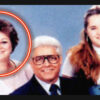Become an Apple Subscriber or Patron to listen.
24-year-old Jeremy Bamber contacted the police at about 3:36 am on Wednesday, August 7, 1985 & said that he’d just received a panicked phone call from his father. Nevill Bamber told Jeremy that his sister, 27-year-old Sheila Caffell, who suffered from schizophrenia, has gone crazy & has the gun. The line suddenly went dead & Jeremy questioned the safety of his family who were at his parent’s house that night.
Jeremy explained that his sister’s 6-year-old twin sons, Daniel & Nicholas Caffell, were asleep upstairs & gave them the address to his parents farm on Pages Lane. Jeremy lived three miles away from his family’s farm & was instructed to meet them there.
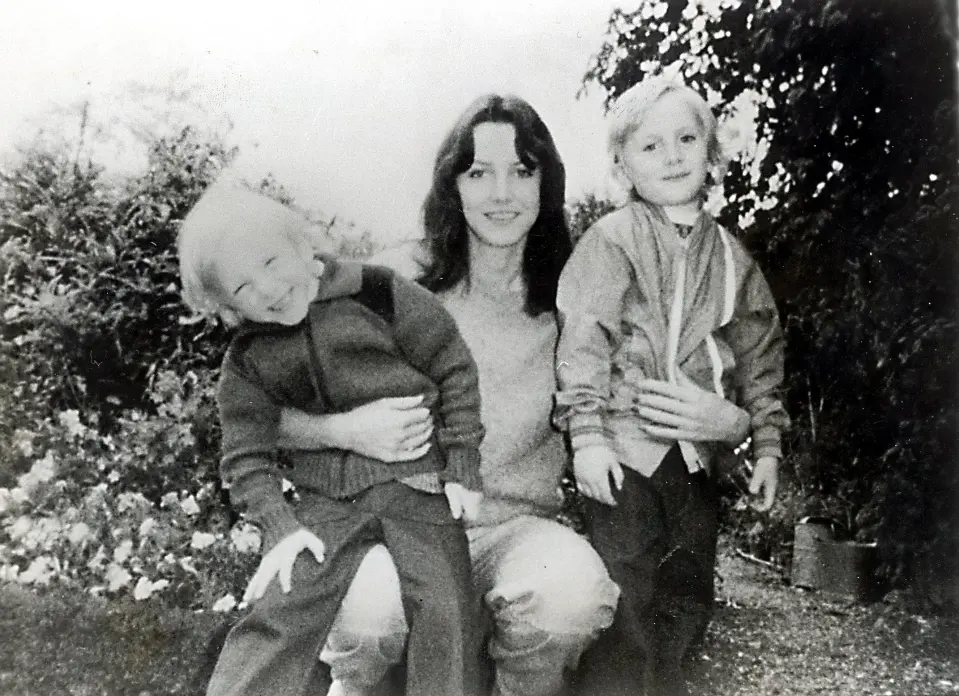
At 4 am a police cruiser pulled up with three officers at White House Farm which was situated facing the Essex, England salt marshes while Jeremy pulled his silver car behind the police cruiser at the end of his parent’s driveway.
Two of the officers told Jeremy to follow them toward the house which sat around a bend, concealed by tall trees. As they made their way closer they could see lights on in three rooms of the house; the kitchen, a bathroom & the bedroom where Sheila’s twins had been asleep. The only sound they could hear was the whining of a dog & as they cut around to the front of the house, they saw light coming through the window of the primary bedroom. As a shadow loomed at the window, the men took cover as they called for backup.
Jeremy told the officers that while he’d been working at his parent’s farm one day earlier, he decided to take his dad’s .22 Anschutz rifle out to hunt for rabbits. Before he left, he placed the rifle in the kitchen with the magazine still loaded & he voiced his fear that his sister had taken the gun & done something to his family.
Jeremy begged the officers to go into the house to help his family, but they refused until backup arrived. At about 5 am, armed officers arrived in a van & Jeremy accompanied them to a cattle barn that was situated at the back of the house.
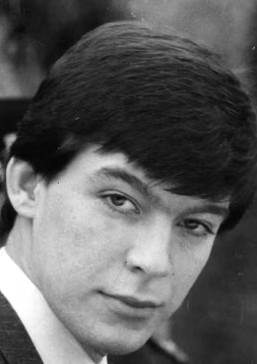
For the next 2.5 hours, the officers remained in place, using a bullhorn to call out to Sheila to surrender, but there was no movement from the home & the only sound they heard were from the dog’s barks.
At 7:30 am, 3.5 hours after the officers arrived at the farm, the raid team was given the go-ahead to enter the home. As they got closer to the house, an officer that led the team reported seeing a woman lying on the kitchen floor, but he didn’t yet have a good view. Since the back door was locked, they used a sledgehammer to force it open.
As the officers finally made their way into the home, they were met with a horrific, bloody scene. Nevill Bamber was slumped over an upturned chair near the kitchen fireplace. His blue pajama pants were around his knees & his face rested in the bucket that held the coal. Blood pooled around his head while brain tissue was visible from a gunshot wound to his head. He’d also been shot in the shoulder as well as his arm while scattered dishes & glass from the light fixture showered the floor around him.
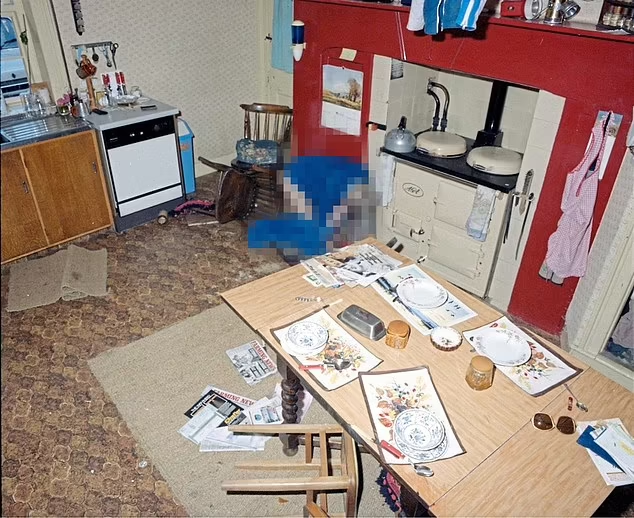
However, the woman that the first officer thought he’d seen was nowhere to be found. The raid team quietly made their way through the house. When they heard movement from the second floor, they utilized an extending mirror to see up the stairway onto the upstairs landing. As the mirror was tilted in the direction of the primary bedroom, they saw a woman collapsed in the doorway, her nightgown soaked in blood.
June Bamber, Jeremy’s mom, had been shot between the eyes as well as six more times through her head, neck, chest & limbs. The family dog, a Shih Tzu named Crispy, was cowering in fear under the bed.
Across this same room, officers found Sheila laying on her back wearing a turquoise nightgown & jewelry. A fatal gunshot had gone through her chin while her father’s rifle lay across her body with her fingers positioned near the trigger. A bible sat open next to her body to Psalms 51-55 where David confesses to his sins & asks for forgiveness.
Six-year-old twins, Daniel & Nicholas were in their beds; Daniel was curled on his side with his thumb in his mouth while Nicholas lay on his back with the covers pulled up to his chin. Tragically, five bullets had been fired into the back of Daniel’s head while Nicholas had been shot three times in the face.
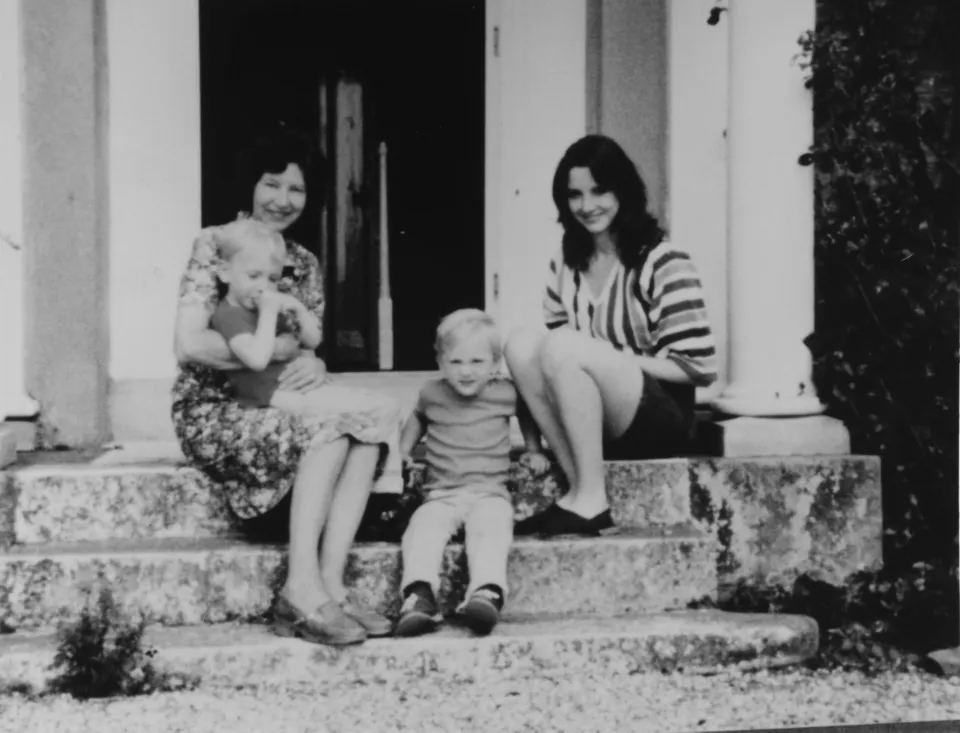
Meanwhile, an officer found Jeremy sitting in the patrol car where he’d been asked to wait. When he was told that his whole family had been murdered, he immediately closed his eyes & began to cry. It seemed as if he hadn’t comprehended what he’d just been told as he begged to speak with his father. He was reminded that Nevill was dead & he broke down in tears & began retching in a field.
The investigation was led by Detective Chief Inspector Taff Jones, who determined that all of the windows & doors of this house had been locked. The coroner’s office determined that Shiela murdered her entire family & then turned the gun on herself in a clear-cut murder-suicide.
News of the massacre at White House Farm was splashed upon the front pages of the newspapers & community members felt broken hearted for Jeremy who had lost his entire family in the blink of an eye. Nevill was remembered as a former fighter pilot while June was an active member of her church who often brought food to the poor.
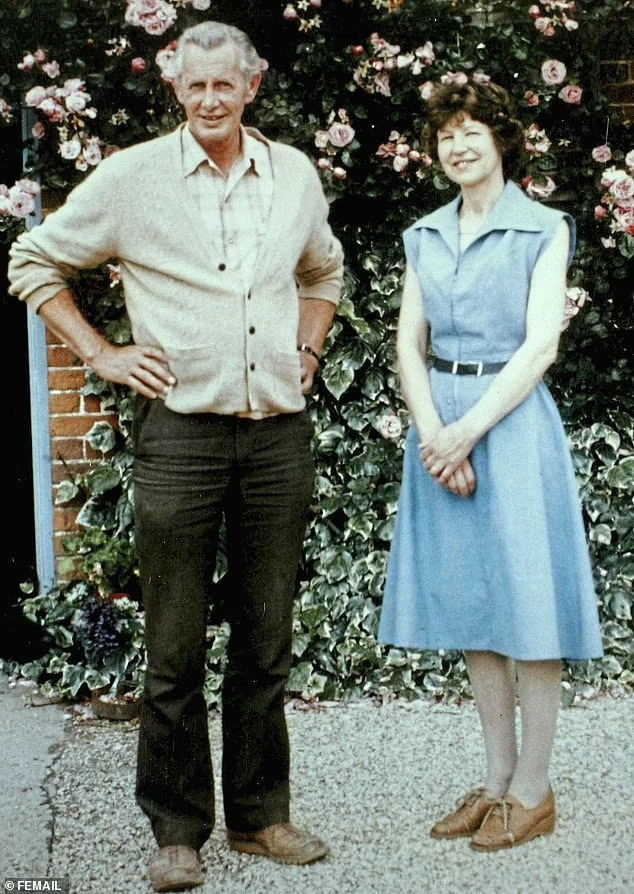
As the story of the White House Farm massacre continued to spread, reporters discovered that both Jeremy & Sheila had been adopted. Jeremy’s mom was a teenager who conceived her son during an affair with a senior Buckingham Palace official.
Meanwhile the farmhouse was seen as a ghoulish location that was shrouded in devastation. Not only had five been just been murdered in the home, but the previous owner drowned himself in a water tank while his father also died by suicide after he drank poison in his room.
Like many families, June & Nevill kept their personal affairs private. Investigators learned that June suffered from psychotic breakdowns soon after she was married to Nevill when she realized she was unable to conceive. She was hospitalized for depression, psychosis & paranoia & underwent multiple rounds of electroshock therapy. According to her psychiatrist, June viewed things in terms of good & evil which put a terrible wedge in her relationship with her daughter.
Since the time she was a child, Sheila expressed that her mom treated her coldly & when she phased into her teenage years & began flirting with boys, June referred to her daughter as the Devil’s child. When Sheila turned seventeen, she moved to London to work as a model & fell in love with an artist, Colin Caffell. Though they moved in together, their relationship was described as tumultuous. When June realized her daughter was pregnant, she insisted they get married, but shortly after the wedding, the baby was sadly stillborn.

When Sheila had a second miscarriage, she became convinced that she was being punished for her evil ways. Shortly after Daniel & Nicholas were born, Colin left their marriage for another woman.
Now a single mother caring for two infants in a London flat with no support, Sheila’s mental health began to suffer. She began to experience hallucinations & paranoia & eventually contacted social services, fearing she might harm her children. June & Nevill stepped in to arrange for their daughter to be treated at St. Andrew’s Hospital where June had also received treatment.
During her time there, Sheila was diagnosed with paranoid schizophrenia & her doctor indicated that she believed her sons would seduce her & she saw evil in both of them, especially Nicholas. She feared that Nicholas was a woman hater & a potential murderer & voiced extreme concern that she could potentially be capable of killing her sons. After she was prescribed an antipsychotic, she was discharged.
Rather than taking her medicine as prescribed, Sheila began self-medicating with cannabis & cocaine. Her mental health continued to suffer as she heard voices & believed she was being chased by the Devil.
Only five months before the murders, Sheila was in London with her boys when she flew into a rage. She began beating the walls with her fists, accusing anyone who approached her of trying to kill her. A friend who was there at the time told police that she was fearful for everyone’s safety since Sheila was acting like a person who was possessed & claimed to hear the voice of God.
After this incident, Nevill arranged for Sheila to go back to St. Andrew’s where it was determined that she relapsed into an acute psychotic state. She was started on a new antipsychotic that would be given monthly via IV to ensure she couldn’t skip a dose & discharged a few weeks later.
Since her modeling career had fizzled with her deteriorating mental health, Sheila began working at cleaning jobs, but supervisors complained that she was coming to work discheveld & unkempt, staring blankly into space. During a time when she was left alone with her 13-year-old cousin, she offered the girl drugs, discussed suicide & said she was a white witch. Her mental health only seemed to worsen when she visited her family’s farm.

Sheila once told her father’s secretary that all people were bad & some deserved to be killed. Despite her ongoing issues, one month before the murders, she persuaded the doctor to give her only a half-dose of her medication which became her last injection of her antipsychotic.
One day after the murders, officers agreed that based on the evidence in the home, Sheila had suffered another breakdown & this time, she’d murdered her family & then killed herself. Despite the fact that Sheila had suffered two gunshot wounds; one to her neck & the other to her chin, the pathologist believed that the first shot would not have been immediately fatal while the second ended her life. He confirmed that he hadn’t found anything to contradict the suicide theory.
With the case closed, the house was cleaned, mattresses, bedding & carpets were thrown from the upstairs windows while farmworkers were given instruction to burn these items. Meanwhile, the five bodies were released for cremation.
The morning after the murders, Jeremy was at his cottage, talking with his 35-year-old cousin, Ann & he discussed the fact that he had been the person to leave the murder weapon in the kitchen. Ann later indicated that as he continued to go on, she became increasingly suspicious & began to take notes of what he was saying.
Ann’s family felt that Jeremy had an unconventional lifestyle that didn’t fit with their country life. He ran with a bohemian crowd & sometimes wore makeup. Ann’s father, Robert, who was married to June’s sister, viewed Jeremy as a degenerate with a constant craving for money.
Although he attended a prestigious boarding school, Jeremy was often sneaking out to watch punk bands & brewing beer. When his classmates learned that he was adopted, they shunned him & called him a bastard. When he left school, he grew marijuna behind his parent’s barn & had an affair with a married mother of three. Although he sometimes helped his father on the farm, Jeremy often left to travel, something Robert disapproved of.
The Bambers & Ann’s family had shared businesses, including a vacation park on the River Blackwater. In the spring of 1985, months before the murders, there had been a break-in at a vacation park’s office with nearly £1000 stolen & relatives viewed Jeremy as the prime suspect. They questioned, had he murdered his entire family for the inheritance?
In their wills, Nevill & June left £380,000 & £230,000 respectively while the family business was worth £400,000 (£1,010,000 = £3,118,627 in 2025 = >$4,000,000). Had Sheila been alive at the time of their parent’s deaths, the inheritance would have been split 50/50 with Jeremy.
Ann was very unhappy to hear Jeremy speak of his mother’s mental illness during the investigation & felt he was screwing Aunt June into the ground. When Jeremy’s girlfriend spoke with officers, she indicated that on the night of the murders, he called her somewhere around 3-3:30 am & said, There’s something wrong at home before he headed to the farm. Ann wondered why he’d taken the time to call her instead of immediately hurrying to help his family.
From the getgo, Robert believed that Jeremy was responsible for the murders & placed the blame on his sister, taking advantage of her mental struggles. They doubted Sheila’s ability to overtake her strong 61-year-old father or have the coordination to accurately fire the rifle. They referred to the fact that she struggled even to pour tea properly.
The family also found it strange that the silencer, which was always attached to the rifle, wasn’t on the gun when it was found near Sheila’s body. They theorized that Jeremy had removed & concealed it since it would have made the rifle too long for her to reach the trigger to shoot herself. Ann wrote that she was scared that Jeremy would realize they suspected him & come after them.
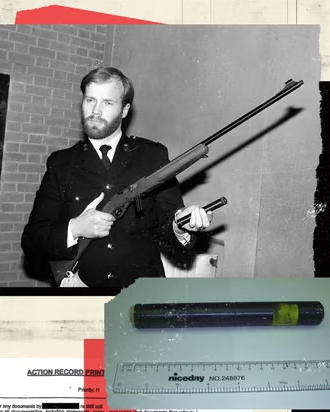
With this, Jeremy’s cousins headed to the station to speak with Jones about their suspicions while Jones was adamant that the case was closed. There were sightings of movement within the home while the police had been outside with Jeremy & a radio log stated that firearms officers had been speaking to someone in the house at 5:25 am.
When they left & went to Jeremy’s cottage, they found him sobbing & took the opportunity to look at his arms to see if there were any markings that suggested a struggle, but they saw none. A doctor came to the home & wrote him a prescription for Valium as he cried that he was haunted by his family’s faces. Ann decided to take the key to the farmhouse since Jeremy insisted he couldn’t handle going back there.
The next morning, Ann let herself into the home, hoping to find a clue as she looked out the window & wondered how Jeremy could have escaped through it & locked it from the outside. Her father & brother joined her there & they gathered valuables, later saying that they took them away for safekeeping. During this time, they found the missing silencer protruding from a cardboard box that held hundreds of rounds of ammunition. As they looked more closely, they realized that there was blood on the silencer.
While Jeremy sobbed & struggled to remain upright during his family’s funeral, his relatives hoped he hadn’t gotten away with murder.
Soon, they found an ally on the police force, Detective Sergeant Stan Jones, who had no relation to Taff Jones.
Ann passed the silencer over to Stan Jones, who noticed not only blood, but also a spot of red pigment, likely from paint scraped off the White House kitchen fireplace while Nevill struggled to wrestle the gun from his killer. With this, the silence was sent for testing & Jones arranged for a paint sample to be taken from the fireplace.
Four days before the funeral, Jeremy met Ann & Robert at his parent’s house & they acknowledged that he looked terrible; he was pale & clearly on Valium. It wasn’t long before he noticed a lot of the valuables had been taken from the home & he instructed not to take anything else. A week later, Robert accused Jeremy of loading the back of his car with family treasures.
The relatives were disgusted to learn that Jeremy left for a vacation after the funerals, but while he was gone, Robert & Ann were back at the house. Here, they discovered that it was possible to climb out of the kitchen window before pulling it closed from the outside. As Ann looked around the backyard, she theorized that her cousin had used a bike that June had recently purchased as his getaway vehicle. She found the bike propped against Jeremy’s wall & imagined he biked through the darkened fields to the farmhouse where he armed himself with his father’s rifle.
Not only did Stan Jones believe this theory, but Mick Barlow, a junior detective, began meeting with them to go over their theories. He accompanied them to the farmhouse to conduct experiments on the kitchen window & noted June’s bike at Jeremy’s cottage. However, once Taff Jones caught wind of this, he ordered him to stop.
However, after Robert appealed to the chief constable of the Essex Police, an officer was assigned to review all of the evidence & confirmed that everything was pointed to Sheila. It wasn’t until one month after the murders when Jeremy’s girlfriend, Julie Mugford, came forward when there was a break in the case. She told them that he’d been planning their murders for more than a year.
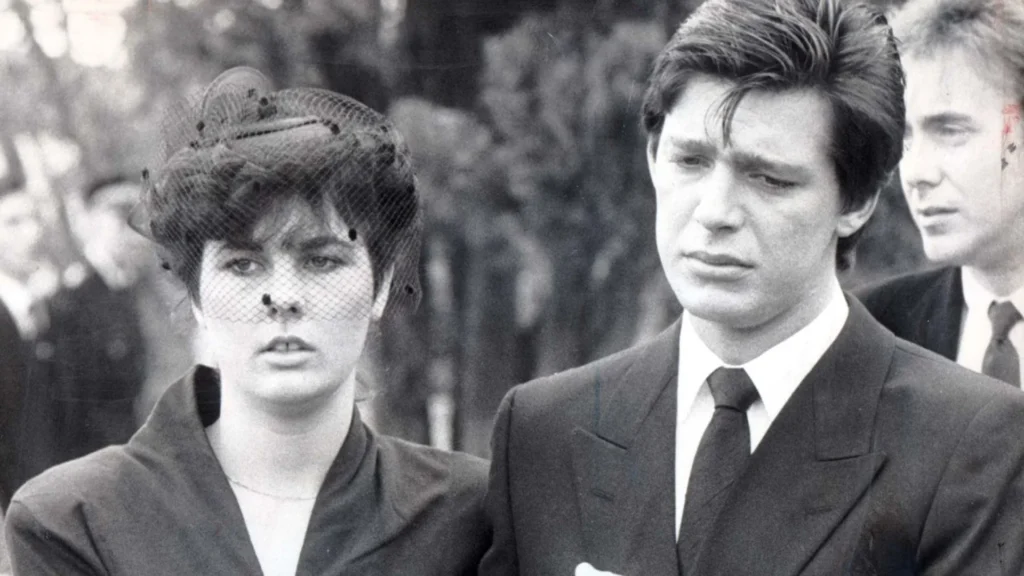
According to Julie, before his family was killed, Jeremy called & told her, The crime will have to be tonight or never. She had been smoking pot & told him not to be stupid & then he called her a second time between 3-3:30 am to tell her that something was wrong at the farm, but she was tired & never asked what was wrong.
But then a month later, Julie gave another statement & said that in the days after the murders, she learned that Jeremy was unable to go through with the murders himself so he hired a local plumber & paid him £2,000 & told him to call him when the murders were complete.
When Jeremy was arrested in London on suspicion of murdering his family, he was adamant that Julie made up the whole story to get back at him for breaking up with her & sleeping with her best friend. It was his opinion that she wanted him behind bars so that no one else could have him.
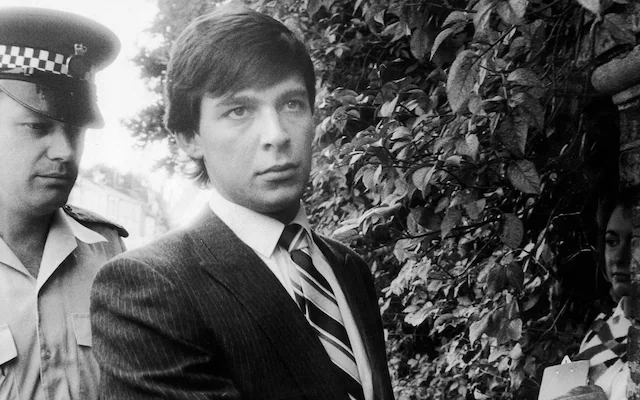
While he was at the station, he maintained that he had nothing to do with this family’s murder, but he did admit that he had been the person responsible for the vacation park thefts. Julie admitted that she helped him with the burglary as well as participating in 13 check frauds with one of her roommates.
Julie was not a reliable witness; after the plumber’s arrest, he was released after police learned he had a solid alibi. Faced with this information, Julie changed her story once again & said that Jermey killed his family himself.
Jeremy was in custody for five days before he was released on bail as evidence for the murders was lacking.
During these five days in custody, Jeremy said that only one night before the murders, Neville & June were urging Sheila to place the twins into foster care. They also discussed assuming custody & sending the boys to boarding school. It was possible that the threat of losing her sons sent her into a spiral.
After his release, word about his potential involvement spread so Jeremy left the country with a friend bound for Saint-Tropez.
New forensic testing raised doubts as to Sheila’s involvement since swabs from her hands showed little led from what would be expected by someone who repeatedly loaded & fired a rifle. Her feet were also cleaner than would be expected, however a pair of blue socks were found on the floor next to her body, spattered with her mother’s blood.
The paint sample from the silencer proved that the paint had transferred from the underside of the kitchen fireplace mantel.
DNA testing was in its infancy, but blood from the silencer matched Sheila’s blood type which was confirmed to be from back spatter from the wounds to her throat. Further testing also confirmed that she would not have been able to reach the trigger of the rifle to shoot herself with the silencer attached, let alone the fact that the silencer had not been attached to the rifle. This information solidified that Sheila had been an innocent victim in this case.
As Jeremy returned from Saint-Tropez in September, he was arrested in customs at Dover & the following day he was arraigned on five murder charges & held without bail seven weeks after the murders. A photo of him was snapped as he smiled in the back of a police van & became a notorious image in the case.
Jeremy’s claimed that his relatives had planted the blood evidence on the silencer, but his attorney dismissed this as too far-fetched to present in court. When Ann went to the crime scene after the murders, she found Sheila’s bloodied undergarments soaking in a bucket in the kitchen since she’d been menstruating & there was question if she could have utilized the blood to contaminate the silencer.
Many question why a calculated killer would stage the scene of a murder & then carelessly leave a clear piece of evidence at the crime scene rather than discarding it where it would never be found. Officers had looked in the cupboard where Jeremey’s relatives say they found it, yet none of them came across it.
He pleaded not guilty to all five murder charges while the prosecution built its case on Jeremy’s hatred toward his family, his financial motive, evidence from the silencer as well as Julie’s testimony.
Several people close to Sheila attested to her inexperience with guns while her psychiatrist did not feel she was capable of harming her family, including her sons. However, she had gone on a three-day shooting trip with her cousin & attended a shooting party with Ann’s husband, Peter.
According to a firearm’s expert for the defense, the murder weapon had a reduced recoil & the long barrel made it hard to miss at close range & he believed Sheila could have absolutely fired it without issues. A ballistics expert for the prosecution stated privately before the trial that the gun in question is quiet enough that someone could sleep through the shots even with the silencer removed.
Over the course of five hours, Julie testified about Jeremy’s plot to kill his family & indicated that she hadn’t come forward sooner out of fear of what he was capable of doing to her in retaliation. With her testimony, she wouldn’t face charges for theft, check fraud or selling cannabis. Her testimony was very similar to that of Jeremy’s family’s version of theories; she indicated that the kitchen window was the escape route while the bike was his getaway vehicle.
During Jeremy’s testimony, he was often reminded to speak in a louder, clearer voice as he insisted he had never discussed harming his family since he loved them. He claimed he’d left the gun in the kitchen out of carelessness, never thinking anything was going to happen despite the fact that his two six-year-old nephews were in the house.
After seventeen days, the judge summed up the evidence for the jury as he acknowledged that Sheila had been a very disturbed woman, but there was no evidence to suggest she was in a psychotic state on the night of the murders. However, multiple witnesses indicated that she had seemed agitated in the weeks before the murders; she was dirty, unkempt & unable to focus, all which are common early signs of psychosis.
The judge acknowledged that Sheila was a slender girl who was unlikely to overpower her much larger father. Swabs that were taken from Sheila’s hands found unusually little lead for someone who had fired so many rounds & feet were surprisingly clean which raised doubt about her guilt.
The fact that both blood & paint was found on the silencer proved that it had been on during the murders & removed after Sheila was killed as the blood inside the silencer was overwhelmingly likely to be Sheila’s.
The jury was told that the blood in the silencer didn’t match any other family member, something that wasn’t true as Jeremy’s uncle, Robert Boutflour, had the same blood type as Sheila. This was something that was known to the defense, the prosecution & the judge, but for reasons unclear, the defense never broached this information.
After several hours of deliberations, the jury returned with a 10-2 majority verdict & the foreman read out five guilty counts. Jeremy was sentenced to life in prison with a minimum of 25 years as the family sobbed in relief.
Meanwhile, the police force in charge of the investigation were mocked in the press for having been fooled by Jeremy while the chief constable held a lunch at police headquarters to offer the family an official apology.
After his conviction, June’s sister, Pamela Boutflour, Robert’s wife, initially inherited the Bamber estate, but in 1992, an out-of-court settlement was reached with Nevill’s sister’s children. Meanwhile, Ann, Jeremy’s cousin & the Boutflour’s daughter, moved into White House Farm with her husband.
As years went by, Jeremy maintained his innocence & had two failed appeals & had made multiple unsuccessful applications to the Criminal Cases Review Commission (CCRC) which was established in 1997, 12 years after he was convicted. His previous submissions were sent to the Home Office department He believes that had the jury members known that the blood in the silencer was also a match to his uncle, he would have never been convicted.
In 1991, he requested to take a polygraph test which was conducted in prison in April 2007, 16 years later & he passed although it made no difference despite the fact he hoped it would clinch his freedom. He believes that his relatives have incorrectly depicted his family as dysfunctional & cold, something he says couldn’t be further from the truth. He indicates that he & his sister were very close, but as her mental illness began, he found it hard to connect with her.
In 2002, Jeremy’s case was referred back to the appeal court at a time when DNA testing was further advanced & proved that Sheila’s blood was not present in the silencer & the next day, the case was referred to the court of appeal. However, court judges concluded that no conduct on the part of the police or prosecution would have adversely affected the jury & they believed the jury reached the correct conclusion.
DNA from at least two other people was also found on the silencer, but because the blood evidence in the case had been mysteriously destroyed a few years earlier, the DNA couldn’t be linked to anyone.
In 2004, Jeremy made another submission to the CCRC, convinced he had compelling new evidence. Scratch marks located on the kitchen’s mantel that the jury had been shown, suggested a struggle between Jeremy & his father did not appear to exist in the original crime scene photos. However, the CCRC didn’t refer his case back to the appeal court citing unsubstantial allegations & matters of pure speculation.
Critics have suggested issues within the CCRC, which at one point had only 9 commissioners despite the fact that they’re required to have at least 11. Lawyers discovered that only 0.77% of cases seen by the CCRC had been referred to the court of appeal in 2016-17.
Jeremy’s first application to the CCRC was in 1997, his second in 2004 & his third was received in 2021. They have received more than 33,000 applications in its 28-year history & have made more than 850 referrals to appellate courts.
With the 2021 submission, Jeremy said he always believed that his father contacted the police to report that Sheila had gone crazy & in 2011, he was able to receive 347,000 pages of documents that had been previously withheld. With this, he came across an incomplete rolling police log that begins with an entry at 3:26 am stating that Mr. Bamber had called from the White House Farm & reads, Daughter Sheila Bamber aged 26 has got hold of one of my guns.
This was something Jeremy nor his legal team had previous knowledge of & had only seen note of Jeremy’s call to police at 3:36 am, ten minutes earlier. The first police car was dispatched at 3:35 am, one minute before the time marked for Jeremy’s call while another document revealed the officer was still speaking with Jeremy at 3:37 am.
Had Nevill called the police at 3:26 am, Jeremy would be innocent since it would have been impossible for him to travel the 3.5 miles back to his cottage on his mom’s bike as the prosecution claimed he’d done.
There are records that indicate that a 999 call came through from the farmhouse at 6:09 am which suggests that someone in the home picked up the phone & dialed during a time when Jeremy was outside with officers.
When the Essex Police officer in question, Nicholas Milkbank, was tracked down for a 2024 article for the New Yorker, he confirmed that a call had come in at 6:09 am; the caller didn’t speak but he had heard noises that could have been a door opening & closing or a chair being moved. This suggested someone had been alive in the house at that time.
As Jeremey & two officers approached the house, a shadow seemed to move across the primary bedroom window, but one of the officers testified that it could have been a trick of the light while the leader of the firearms squad indicated that when the officer initially spoke about it, he referred to it as a genuine sighting.
When officers first approached the property, an officer reported seeing a woman’s body through the kitchen window & later said it was actually Nevill while Jeremy’s lawyers suggest it was Sheila who fled as the officers broke down the door.
When officers reported finding Sheila dead over thirty minutes later, they noted blood leaking from both corners of her mouth.
Jeremy believes that Julie gave her false statement to police out of anger of the relationship ending & she couldn’t take it back because she knew she’d face consequences. When Jeremy eventually told her he no longer loved her, she tried to smother him with a pillow as she told him, If you were dead you would always be with me. It wasn’t until he broke up with her that she went to police to accuse him of murder.
After the trial, Julie sold an interview for twenty-five thousands pounds which she used to buy herself an apartment. She went on to work at a primary school in Canada in 2001, she indicated that she stands by her original story & believes Jeremy is guilty.

2025 marks 40 years that a now 64-year-old Jeremy Bamber has been behind bars; he maintains his innocence & holds out hope that the CCRC will refer his case. Many people believe that Jeremy Bamber’s case is an obvious miscarriage of justice & highlight issues in the UK’s criminal-justice system & revealing that he’s innocent & wrongly spent four decades behind bars would be catastrophic for the criminal-justice system.
Jeremy insists that his conscience is clean because he knows his truth, that he didn’t murder his family. Despite the four decades that he’s been in prison, he feels he’s been very lucky in life because of the people who have supported him & the people he has met have been so interesting.
References:







